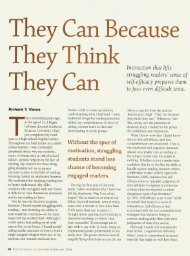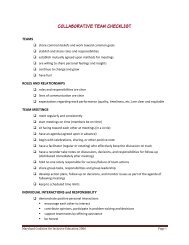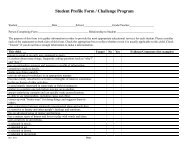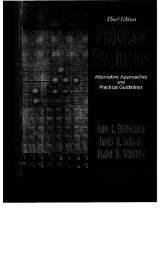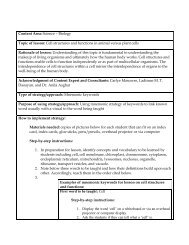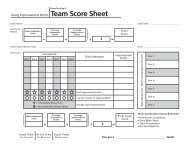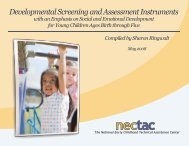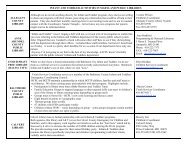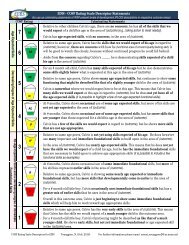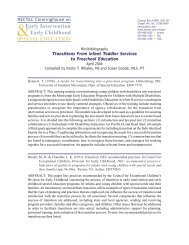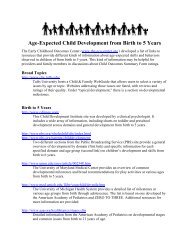The Autism Spectrum Disorder Service Guideline.pdf - CTE - Online ...
The Autism Spectrum Disorder Service Guideline.pdf - CTE - Online ...
The Autism Spectrum Disorder Service Guideline.pdf - CTE - Online ...
You also want an ePaper? Increase the reach of your titles
YUMPU automatically turns print PDFs into web optimized ePapers that Google loves.
Alternative or augmentative communication systems are one way to assist children whohave limited verbal language. <strong>The</strong> type of communication system used will varydepending on the child and the activities and environments in which he or she spendstime. <strong>The</strong> system may include simple gestures, sign language, objects, pictures, or anelectronic communication device. <strong>The</strong> use of an alternative system does not mean thatthe child does not develop verbal language skills or speech. <strong>The</strong> communication systemis used as an aid to improve communication and speech, increase social interactions,and provide structure to daily activities or routines. Children with ASD are oftensuccessful with picture communication systems because they tend to have strong visualskills. If a child has difficulty understanding spoken communication, pictures are oftenused to give more information. For example, a child may be offered a choice of what hewants to play with by showing him two pictures. <strong>The</strong> child will choose what he or shewants by pointing to the picture or handing it to the adult. <strong>The</strong> purpose of an alternativesystem is to expand the ways in which the child can interact with and be understood by avariety of people.One of the more common alternative communication systems used with children withASD is the Picture Exchange Communication System (PECS). (21) PECS was developedto allow children and adults with ASD and other communication deficits to initiatecommunication. PECS begins by teaching a child to exchange a picture of a desireditem with an adult to request something. <strong>The</strong> system goes on to teach discrimination ofsymbols and then puts them all together in simple "sentences." Many young childrenusing PECS also begin developing speech. <strong>The</strong> same is true for children who learn signlanguage. <strong>The</strong>re are some who conclude that signs are even more likely to promotespeech, since each word has its own motor movement, whereas the motor movementwith every picture is the same, a point. (22)Whether a child is using an alternative communication system or not, the following skillsshould be included in a communication curriculum for children with ASD:1. look at person when name is called;2. look at objects when they are labeled;3. attend to a speaker;4. use eye contact to maintain interaction;5. imitate simple actions, sounds words, songs or finger plays;6. gain someone’s attention;7. manipulate a person or object to ask for something;8. point;9. combine pointing with looking at a person to ask for something;10. request “more”;11. tell someone you are “all done”;12. say “no” or refuse;13. greet others;14. say “yes” or agree;15. name things;16. name people;17. describe what others are doing.CT Birth to Three System • <strong>Service</strong> <strong>Guideline</strong> #1 • Revised July, 2002 and January, 200817



